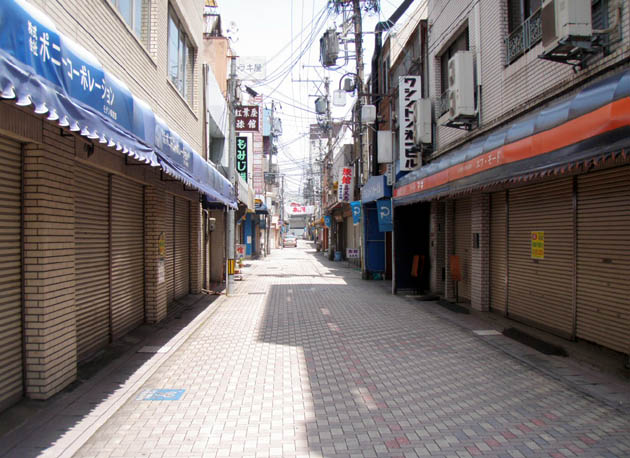
Gifu is an old city along the Nagara River. The river is famous for “cormorant fishing”. A fisherman ties several birds like a pelican to strings, and put them in the river. The bird holds a sweetfish (Plecoglossus altivelis) in his mouth, but he cannot swallow it because his neck is tied up. This clever method of fishing is handed down from the ancient times. Probably it was introduced from the south China in the prehistoric period. The river is also famous for trout fishing. In this season trouts called satsuki masu (Oncorhynchus masou), which are called amago before they go down to the sea, return to the river and many anglers come and try to catch them.
Gifu was a small village before Duke Dosan Saito built a castle in the sixteenth century. Duke Nobunaga Oda, his son-in-law, succeeded to the castle. He gathered merchants and made a big city. At that time, Japan was divided into many small territories. Duke Oda unified all the country after a lot of battles. After him, Prince Hideyoshi Toyotomi succeeded to the throne, and then Grand Duke Ieyasu Tokugawa won the country. Thus the civil war era was over, and the Edo era began. Still now we can find the castle of the Dukes in the middle of the city.

The recent population of the city is about 400,000. However, the economy is decreasing. Once there were many dealer shops of the fiber, but all of them has disappeared. You can see a dead street in the picture. The reason is political stupidity of the local government. Similar phenomenon can be found in all over Japan. Many local cities are dying, while a few big cities, e.g., Tokyo, Nagoya, Osaka, Fukuoka, are vivid on the sacrifice of the smaller ones.
I gave a lecture, and 150 people came. This is a big number for me. The topic was child rearing. After two hours of talking, I accepted questions. Many people gave so many questions that I had to hurry very much. Mothers are enormously vivid even if the city is out of spirit.

